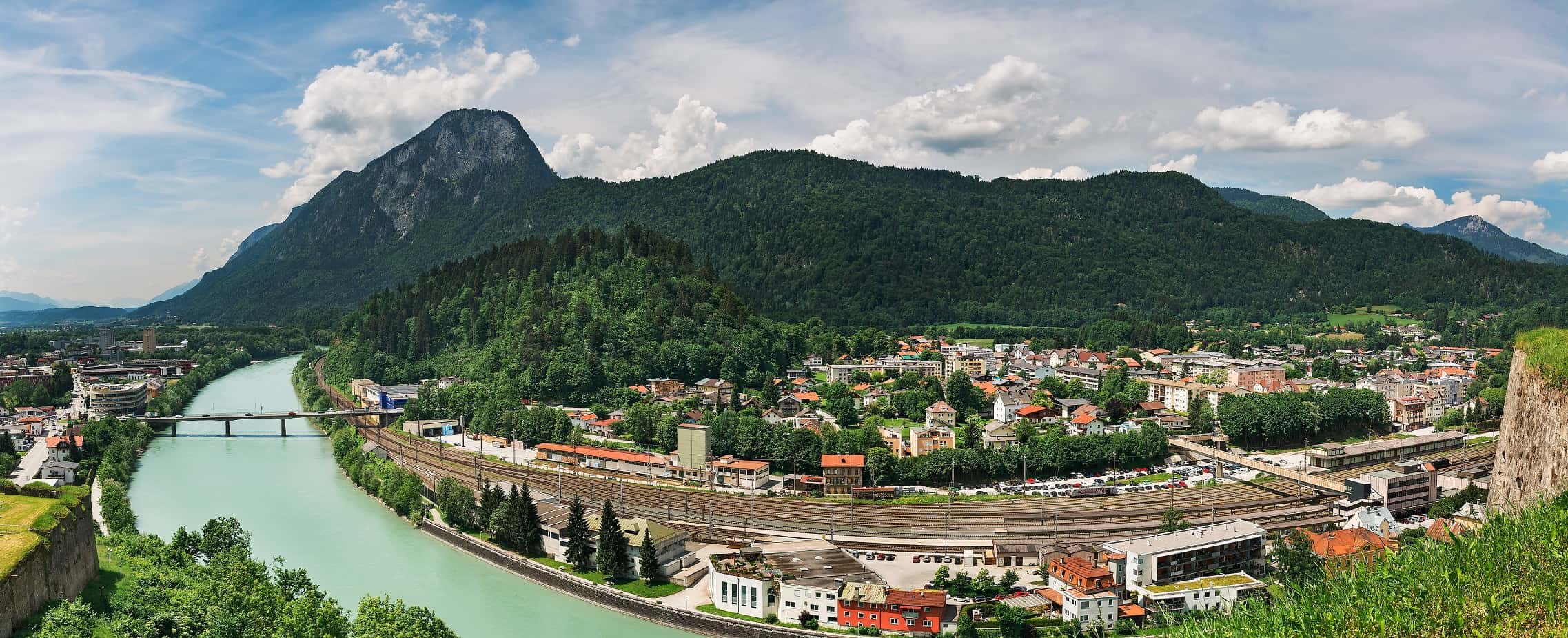The Habsburg dynasty contributed much to the creation of modern-day Austria, one of the richest countries in the world with an exceptionally high standard of living. Nestled in the Alps, Austria is a popular tourist destination and has a very modern setup to support millions of visitors that arrive each year. Amid all this slick and efficient infrastructure, there are a few treasures that let you see in to the country’s past splendour.
Reutte

Tyrol, Reutte District
It’s a market town on the old Roman Road Via Claudia Augusta, a main thoroughfare between Italy and Germany – at least it was 1489. Today the population of 6,000 is content to be a charming side-stop on the way to the nearby Bavarian Castles and ski resorts. Summer hikers appreciate the peaceful atmosphere, and a walk through the grassy hills may encourage you to sing “The Hills are Alive” from The Sound of Music.
The first Saturday in August is the time to visit when the whole town puts on a festival to celebrate the date they were named as an official market town, an event that gave them the right to hold a market (still valid today) and conferred other privileges.
Kufstein

Tyrol, Kufstein District
Located on the river Inn, Kufstein was granted city status around 1400 due to its presence on the waterway. The city centre has several picturesque lanes and buildings as well as a well-preserved section of the medieval city wall. An old city gate is still in one of the sections.
In addition to the Gothic-Baroque church of Saint Vitus and the remarkable city hall on Stadtplatz square, the city is towered over by the Kufstein Fortress built at 507 metres . The fortress is at least from 1205 although the exact dates of construction aren’t known. A number of prominent people were held prisoner here during the Austro-Hungarian Empire and currently it houses the museum for the city. Concerts and meetings are also held in the halls that were once trodden by Emperors.
Volburg, Dornbirn District
Hohenems
A small town of around 15,000, it’s the unexpected home of a 16th century Renaissance palace and the remains of an older castle. Alt-Ems, built sometime around the 9th century, was at one point one of the biggest fortifications in the southern part of the German Kingdom. Nearby Burg Neu-Ems was built around 1343 and although both castles were destroyed during the Appenzell Wars, Burg Neu-Ems was rebuilt and is privately owned.
At the foot of the Schlossberg rock that holds the ruins of the castle, the palace that was built in the mid 1500s dominates the town square. Two notable manuscripts dating from the 1700s were found in the palace’s library.
The Jewish quarter was depopulated in 1942 and many of the buildings remained undamaged. Today it holds a museum commemorating the Jewish community and the nearby cemetery has gravestones that date to 1617.
Hallein

Salzburg, Hallein District
The history in this city of 20,000 spans some 4000 years, originating with a Celtic community in 600 BC. The Keltenmuseum has information and artifacts that cover this time period as well as describing the development of salt mining in the region.
The Hallein Salt Mine has been worked for some 7,000 years, predating the arrival of the Celtic tribes. It supported the growth of nearby Salzburg and currently serves as a museum. An electric train takes visitors inside and lower levels of the mine are reached via two wooden slides. At one time the visit included seven slides to lower levels but the tour has been shortened.
Gmunden

Upper Austria, Gmunden District
This is a popular summer resort destination known for an assortment of health treatments including pine-cone baths and a whey cure. It was settled sometime during the 5th century and the pretty exterior hides a fairly bloody history. A short distance away, the Schloss Ort is built in (on) Traunsee lake and dates from 1080 with improvement occasionally added over the next 200 years.
The 300 year old Gmundner Keramik has been producing traditional hand-crafted ceramics since 1492 and most of the town’s citizens have at least one set of the famous factory’s dishes in the cupboards. Tours are available and shopping is encouraged.
Braunau

Upper Austria, Braunau am Inn District
Known chiefly for being the birthplace of Adolf Hitler, the town has a great deal of history that precedes that event and sights worth seeing. One of the oldest town statues in the country is here and the Gothic church dating from 1439 has one of the tallest spires in Austria. The town walls are visible in places an a museum is housed in 18th century public baths. Hitler’s birthplace is slated to become a museum dedicated to detailing his crimes.
Have you ever stepped back in time in Austria?
Let us know - comment below or tweet us
Related content on Canadian Traveller


